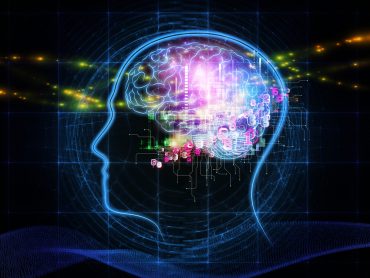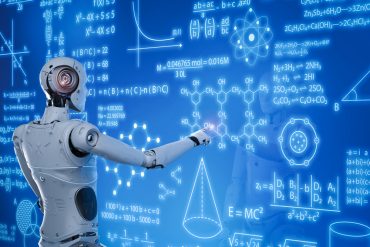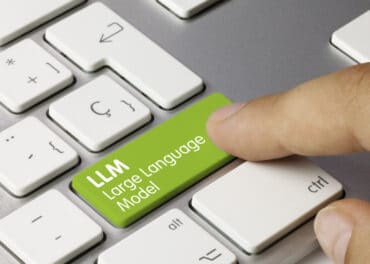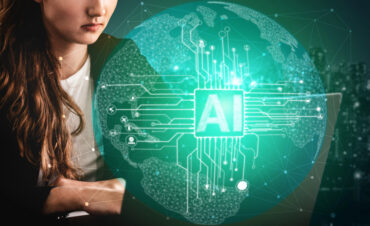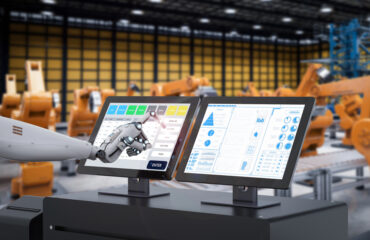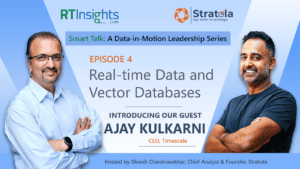
General-purpose databases are changing to adapt to the new AI and GenAI workloads. Take Postgres which recently gained vector database extensions.
Should an AI technology stack include a specialized database or a general-purpose database that’s been extended to handle AI workloads, including the newest ones like LLMs, augmenting data, and handling both unstructured and structured data?
Host Dinesh Chandrasekhar, Chief Analyst & Founder of Stratola and special guest, Ajay Kulkarni, CEO and Co-founder of Timescale take the long view of how databases have changed to keep pace with new technology and new use cases. The number of databases has exploded but now the trend is moving the other way–toward simplicity.
Postgres is the example they use to analyze this trend and the newest use cases being brought to databases.
Their conversation covers a lot of ground as these topics show:
- Origins of Timescale DB
- Databases move toward simplification
- Evolution of Postgres up to new vector and AI capabilities
- Drivers of growing open-source adoption: costs and licensing
- Embracing AI
Guest
Ajay Kulkarni, CEO and Co-founder of Timescale
Ajay Kulkarni is a seasoned serial entrepreneur and CEO. He is the CEO and Co-founder of Timescale, the leading database company for time-series, analytics, and AI. Under Ajay’s leadership, Timescale has been instrumental in building and powering the next wave of computing by delivering an elevated database experience for developers worldwide.
Prior to founding Timescale, Ajay was an accomplished entrepreneur whose previous company was acquired by GroupMe/Skype/Microsoft. He is also deeply committed to supporting and mentoring entrepreneurs and is always willing to lend his expertise to help aspiring founders achieve their goals.
Ajay’s vision, leadership, and commitment to excellence have been instrumental in driving Timescale’s success. The company is backed by some of the most prominent names in the venture capital industry, including Benchmark, NEA, Redpoint, Tiger Global, Icon Ventures, and Two Sigma Ventures, and is well-positioned for continued growth and success.
Host: Dinesh Chandrasekhar is a technology evangelist, a thought leader, and a seasoned IT industry analyst. With close to 30 years of experience, Dinesh has worked on B2B enterprise software as well as SaaS products delivering and marketing sophisticated solutions for customers with complex architectures. He has also defined and executed highly successful GTM strategies to launch several high-growth products into the market at various companies like LogicMonitor, Cloudera, Hortonworks, CA Technologies, Software AG, IBM etc. He is a prolific speaker, blogger, and a weekend coder. Dinesh holds an MBA degree from Santa Clara University and a Master’s degree in Computer Applications from the University of Madras. Currently, Dinesh runs his own company, Stratola, a customer-focused business strategy consulting and full-stack marketing services firm.
Resources
Watch Smart Talk Episode 1: The Data-in-Motion Ecosystem Landscape
Watch Smart Talk Episode 2: The Rise of GenAI Applications with Data-in-Motion
Watch Smart Talk Episode 3: Modern Data Pipelines and LLMs
View the data-in-motion ecosystem map here
Learn more about data-in-motion on RTInsights here
Transcript
Dinesh Chandrasekhar
Hello and welcome to this episode of Smart Talk, a Data-in-Motion Leadership series. I’m your host Dinesh Chandrasekhar and today we have a very exciting guest, Ajay Kulkarni, of Timescale DB. He’s no stranger to the data world. He’s been working with databases for the last 30 years, and he founded Timescale DB almost seven years ago, and we are seeing some phenomenal news and updates from Timescale today, and I am super excited to have you on the show today. Welcome.
Ajay Kulkarni:
Thank you for having me, of course.
Dinesh Chandrasekhar:
So let’s kick it off by just asking you this very vanilla question. Tell us about Timescale. You know, I’m sure a lot of people know, but also for the folks in the audience that do not know who Timescale is it’d be really good to give a 30-second intro about you and the company.
Ajay Kulkarni (0:44):
Yeah, Timescale, as you mentioned, we launched it about seven years ago. In that period of time, we’ve seen phenomenal growth, millions of active databases, 1000s of customers, probably 10x that in our community. Raised $180 million in funding from top investors, investors like Benchmark, NEA, Redpoint, Tiger Global, Icon Ventures, and Two Sigma Ventures and yeah, we’re building the next great database company. We’re doing this by really anchoring on Postgres and making Postgres better for its core use case, but also other new use cases. We started off with time series. We just today launched some new open-source projects that make Postgres even better for AI workloads and vector. Vector workloads are outperforming Pinecone, but a high-level next for a database company. We’ve been on this ride for seven years, and every year it feels like another level in the rocket ship.
Dinesh Chandrasekhar (01:43):
So with your experience and having been in the industry for this long, what specific trend are you seeing in the database world today? Because, you know, every day we are hearing announcements like what you just said. Every other company is making a splash with news and so what is it that you see as a trend happening today?
Ajay Kulkarni (02:03):
It’s really fascinating. So we, you know, I’ve used databases for decades, as you mentioned. We started this company and then launched the product seven years ago, when we started we knew very little about the database business. We know how to use database business, but since then, we’ve been students, and in some ways, we’ve become kind of leaders, thought leaders in the space. And we’ve seen a lot, you know, I think, like by the biggest trend we’ve seen is that for a long time, there was an explosion of databases, databases from every use case. You know, maybe 20 years ago you had maybe five databases, you know, that you could use now to like, 500 and that’s what we saw for like, the first several years. But what we noticed in the last year has been this kind of, this growing desire for simplification, and there’s almost this growing war cry amongst the same group of developers for just to use Postgres, Postgres for everything. And in fact, I think Postgres is now, as of last year is now the most loved database in the Stack Overflow survey, just beating up MySQL. So I think that’s the biggest trend. Is after decades of this Cambrian explosion of databases, we’re seeing this kind of like consolidation, again, pendulum swinging backwards, but really to Postgres.
Dinesh Chandrasekhar (03:16)
So you know, having worked in the data management space for the last couple of decades, you know, my vantage point says that, you know, yes, there are databases. Yes, there is convergence happening on a lot of different high levels. But there was also like, you know, data warehouses, or like, data lakes and type city databases. Everything has its place. You know, everything has its sets of use cases and stuff in a traditional enterprise today. I’m sure you’re seeing probably beyond Timescale’s presence, you know, there are also these other databases in the enterprise. What are some of the real challenges that you think those enterprises face when they have these plethora, you know, footprints of databases that they are dealing with,
Ajay Kulkarni (04:02):
I mean two things. First is, I think about the database market as kind of loosely like the smartphone market. Pre iPhone, you traveled with maybe your portable phone, you had your email device, like a library device, a messenger, probably, right? When I traveled, I traveled with a Discman, and I traveled with a digital camera with a video camera flip.
Dinesh Chandrasekhar (0436):
We’re dating ourselves!
Ajay Kulkarni (04:41)
Even lately, I don’t take my credit cards or my wallet when I go out. I pay with my phone, and you see this convergence, and it’s like, is there a market for digital SLRs? But the market has shrunk over time as the iPhone has gotten better and better, and good enough has gotten pretty great, right? And the same thing for video cameras. Is their market for GoPros? Of course, but like iPhone videos, I’m sure, is orders of magnitude larger? And Blackberries essentially went away, you know? And so I think, like in general, that is the kind of trend we’re seeing, is this desire towards simplicity. And there are two things that are happening. One is compute is just getting more powerful and cheaper, and storage keeps getting cheaper, and Postgres also keeps getting more powerful. And you get these three things combined, you have this world where this one database has been good enough for more and more things.
So your second part of the question is, what does this mean for the enterprise? You know, enterprise you know, is obviously a very different decision process than if you’re a new start building from scratch. What we found is kind of two major places where this trend fits in the enterprise. One is, look, every enterprise has new workloads. Every company is experimenting with AI these days and llms. And I think anytime you’re building a new application, you have an opportunity to try a new stack. And I think that’s where we’re seeing a lot of Postgres adoption. There’s another thing we’ve seen, anywhere from digital-native companies, but also to traditional industrials that are a 100 years old, is as these companies are modernizing their infrastructure, their digitized infrastructure, software transformation, whatever you want to call it, they’re looking for open source databases to replace a lot of the proprietary ones that may be used for decades. This replatforming, this modernization of infrastructure cloud, also gives the opportunity to do that. And that’s another place where we see Postgres really come in. And in fact, like, it’s a really interesting trend, we’ve noticed that, and we even wrote a blog post about this, we call Postgres, the bird horse of databases. And it’s this idea that it’s a database. It’s essentially contradictory. Where you have this, you have this group of startups who are building next-gen AI tools, like a co-pilot for Git history, choosing Postgres. And then you see these traditional industrials who have been around for 100 or 150 years, who are choosing Postgres as well, but for different reasons. They’re choosing it because it uses open source, and it’s modern, but it’s also financially a lot cheaper than a proprietary vendor. And when those two things combine you have this really interesting distribution of usage that’s not like anything I’ve ever seen.
Dinesh Chandrasekhar (07:32):
I like your analogy of the iPhone example. That said, I mean, it’s interesting with the news yesterday, that seems not only are we carrying everything in our iPhone, we’re also carrying an AI engine as well. That’s also going to happen very soon. But going back to your response about how enterprises are leveraging data and the challenges that they’re facing, how they are overcoming it and all that, share with us some of the use cases that you’re seeing with this type of diverse set of data stores, what kind of infrastructure that our data architectures have. what kind of use cases are you seeing from your vantage point?
Ajay Kulkarni (08:15)
That’s a great question. Well, we see a couple things. First, new startups. We’re seeing quite a bit with the worlds of IoT, crypto, AI, that one company I mentioned, building a co pilot for Git history, is a great example of a modern application that wasn’t possible two years ago. They ingest Git commit history, and they can essentially let you ask questions like, hey, who has contributed the most? Do we know what type of contributions have happened recently? Can you summarize the latest commits? That’s useful for a variety of reasons. We have another company that is essentially ingesting news articles and analyzing them and using that to add let their customers ask, “This thing happened yesterday. Why did it happen?” What they can do is actually translate that into the articles that they found, and then they take the whole thing and they summarize it.
Dinesh Chandrasekhar (09:23):
I love your example of that GitHub events-capture company. This Smart Talk series is all about data-in-motion. So I’m very interested that particular one, because we are talking about millions and millions of events and data that is being captured across GitHub, across all these different hundreds of thousands of projects. And I’m sure the database size is, like, ginormous. I read a little bit about that particular case study, and I saw the kind of ingest that happened. It was so truly commendable to see that kind of scale and everything. But what I’m interested in is, when you talk about a time series database, I can clearly see that use cases like that are absolutely practical, where you’re talking about every single event that happened at a specific time, and you’re wanting to capture all those in a time series database, which makes absolute sense, but now the extension to the story is what makes it more interesting for me, with your announcement that went live today. So can you share that as well as explain your answer of your vector database announcement, how this fits into this particular use cases, like, why would this company also extend their existing time series database footprint into the vector conversation? How does it happen? What does that use case evolve into? Is it that NLP example that you just gave about querying natural parameters of like which is the project that is getting the most number of commiters and things like that? What is driving that same time series example into the vector validation?
Ajay Kulkarni (11:03)
So our mission at Timescale–it’s not about time series, not about Postgres, not about even a database. Our mission is to serve developers so that they can build the future and really be of service to them, help them, unblock them. And we find that really exciting, because we believe by doing that we can accelerate the future and make it happen sooner. I find that really cool. So as part of that, we’ve started off solving problems in series domain for developers, and then increasingly, what we found is that we serve our customers. We keep hearing from our customers some of their AI challenges around vector databases. And we thought, well, we could address those as well. So we open source today is a combination of several months of effort by a really tight R & D team at Timescale–two extensions, PG vector scale and PG AI that are two open source projects designed to make Postgres the best database for AI. Now again, why Postgres? Well, we hear from developers that what they’re really craving is simplicity in their operational stack, simplicity in their databases. I often hear it’s kind of like your Wi Fi. If you have to think about it, that means something’s wrong. You want to not think about it. You want it to just work right? And we’ve heard, okay, the answer to this problem is Postgres, Postgres for everything. And then we asked ourselves, okay? Back then we made Postgres the best database for time series. Can we make it the best database for AI? And we found that we could, and we open sourced it all because, look, our competition isn’t other Postgres folks. It’s everything that’s not Postgres, and that’s we open sourced today. It’s already generating revenue. We already have some of our customers using it. It’s generated a ton of buzz today. But, yeah, I think that’s how this all fits together. And I think the key part is that we are not weirdly passionate about open source or databases or time series. What we’re really passionate about is serving developers, and by doing that, accelerating the future.
Dinesh Chandrasekhar (13:17):
Thank you, and congratulations on the launch once again. So since you spoke about the mindset of the developer about Postgres, obviously open source. What’s been your outlook on the open source community in the last decade? And how has it changed? I’m asking this purely from the context of making money on one hand, you know, we have who we serve, love the open source community. I come from that world, been catering to that audience for a long time. I know the value of open source communities. On the other hand, as a business vendor, as a database vendor, you’ve got to make money, right? You cannot give it all away for free. So how do you look at this balancing act, and how do you make sure that you are serving the open source community, but at the same time adding value to your customer?
Ajay Kulkarni (14:10):
Long story short, it’s a really fascinating space for rapidly changing our approach which at Timescale has been to have innovative licensing that is, if you think about proprietary and open source on a spectrum, it’s like one notch below open source. It’s free. It’s source-available. You can do anything you want with it, except offer it as a Database-as-a-Service, which means if you have an IoT SaaS application or crypto or you know this AI tool, that’s cool. Totally fine. You just can’t offer it as a database, as a service, and we we’ve done that primarily to block up hyperscalers so we could build a business. But with this, AI is taking an even different approach, which is we just made it all open source. There’s some other ideas we have on how to monetize it. So I think it is evolving. And I think one thing I would encourage the community just to look at this with open eyes, because at the end of the day, if these projects are not self sustainable, then they’re not going to exist. But it is changing, and I’m really excited to see the changes.
Dinesh Chandrasekhar (15:21):
So I’ve got one other question, probably based on our history as well. You know that but the audience doesn’t know. So for folks that do not know, 2019 IoT World, I think, you and I were on a panel together, and we talked, and …
Ajay Kulkarni (15:34):
You were wearing a great blazer. I think I just had a t shirt on. It was great. I think it was blue blazer.
Dinesh Chandrasekhar (15:43):
So we had a great conversation. I think it was really good that we spoke about IoT and all that. But recently, I read on your one of your blog posts that 2010s was the decade of the IoT and then 2020s is the decade of AI. Is that, how you look at it as well, that the IoT conversations have fizzled out, or is it like still happening, but the AI conversations are like drowning the IoT noise? What’s happening?
Ajay Kulkarni (16:13):
I think it’s additive. It’s like a layer cake. And so I think one would probably say that the 2007 to 2014 was the era of smartphone apps, right? That doesn’t mean smartphone apps are dead today, or there’s no use, no, of course not this kind of usage. But it just means that this early era of excitement and like kind of frontier-like thinking, has now matured, and you have a few companies that have essentially become the main players in the ecosystem. We probably saw the same thing with the internet, that the internet in the 90s was like the Wild West, right? And then, you know, in the 2000s eventually kind of consolidated a few key players. I think what we’re seeing in AI right now is the next wave, the next layer cake. IoT is still really strong. It’s still growing. It’s still a key part of our business. And AI is not this orthogonal layer.Every IoT company is thinking about AI, you know. So does that mean it’s replacing IoT? No, it’s additive. But I think, from my vantage point, probably yours as well, having worked in technology for years, what’s happening right now in AI is the most exciting thing I’ve seen. I mean, definitely since the iPhone, maybe even since the internet circa 1995-1996. I remember playing with the internet back then, thinking, I have no idea what’s going to happen with this, butit’s just cool. It’s just like, something’s going to happen, you know. I was in high school at the time, and that’s why I decided to major in computer science when I went to college. And with AI right now, I feel the same thing. When I see what our customers are doing, wow. We’re just in here. We were just gifted all these Lego pieces, and we haven’t even explored the different things you can build with them. We don’t even know what all those pieces look like. And that’s what I find really exciting. And it’s additive. I think IoT will benefit. I think every industry is going to benefit. Are there some challenges? Yes, but, you know, I’m a techno optimist. I’m excited about it.
Dinesh Chandrasekhar (18:31):
And I used to think, at least last year, that AI is more like the icing on the cake, rather than a layer by itself. Now it looks like it’s definitely becoming a layer of its own. I think it’s definitely something to be taken seriously.
Ajay Kulkarni (18:45):
With anything, v1 is icing. V1 websites were just like the online presence of the retail storefront, you know. V1 of mobile apps were just like the mobile version of the website And then you had mobile-first applications like Uber that made the website just not matter. Or like Instagram or Tiktok. And I think with AI v1 you’ll see people building AI into their existing products, which we’re already starting to see, right? But v2 is, well, I think we haven’t really seen these yet. It’s true AI–native applications, and, yeah, it’s gonna be crazy.
Dinesh Chandrasekhar (19:30):
All right, we’ll wrap this up. This is fantastic. And I just want to give you, like, one last opportunity to, like, talk to us about, like, some of the future looking trends and perspectives from your vantage point, you again, sit as a CEO of a hot database company, working in the crux of like, some of the hottest use cases across time series and vectors and whatnot. And so I feel like you are definitely seeing a lot more excitement happening around you. I just heard you say that you were talking with chat GPT. I’m sorry, with open AI
Ajay Kulkarni (20:08):
I talk to ChatGPT every day, but I was chatting.
Dinesh Chandrasekhar (20:17):
But yeah, I mean, so tell me about like you know what’s going on from your vantage point of how you see the next, you know, two or three years evolving,
Ajay Kulkarni (20:24):
The trends firstly, extrapolate from current trends. Every company is becoming a software company, or is getting replaced by a software company. Those are two options, right? Green software is essentially built on data. The data and databases are the lifeblood of these companies now, right? And then you take that a step further and say, okay, if this is a key component to your business, do you want 100 kinds of pieces working together and some group global architecture? Or, do you want simplicity? You want simplicity. And so that’s where with Postgres everything comes up. And the other trend we’re seeing is that everything is going to be an AI application. You know, it’s like that old cartoon. What is your what does your mom do? She works with computers.” As opposed to what? Almost everyone workson your phone or on the desktop. And so I think the future is that AI is for everything, Postgres for everything, and every business is either embracing this or will get replaced. I think that should drive a certain level of urgency, but also hopefully creativity and excitement. I almost have this visceral feeling that, like, this meteor just hit planet Earth, and there are a bunch of dinosaurs who won’t be able to evolve, to survive, and there’s a bunch of scrappy little mammals who are going to figure out. That’s we’re seeing right now and it’s Creative Destruction, or whatever that phrase is, and I am someone who embraces change and embraces that kind of work I think if I were to make any recommendations, I would say that if you haven’t fully embraced AI embrace it and just learn as much as you can. There’s some great tutorials out there. We have some great blogs. There’s some great books as well that you could read, because I think it’sgonna be a key part of everything we do for the future.
Dinesh Chandrasekhar (22:32):
I did. Thank you so much for your succinct, but clear, very clear answers. Love the conversation. It’s always good to talk to you. Appreciate you joining us on this episode. Thank you so much for your time.
Ajay Kulkarni:
Thank you again for having me.


